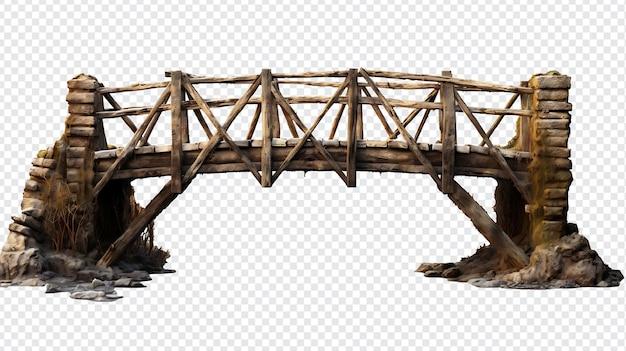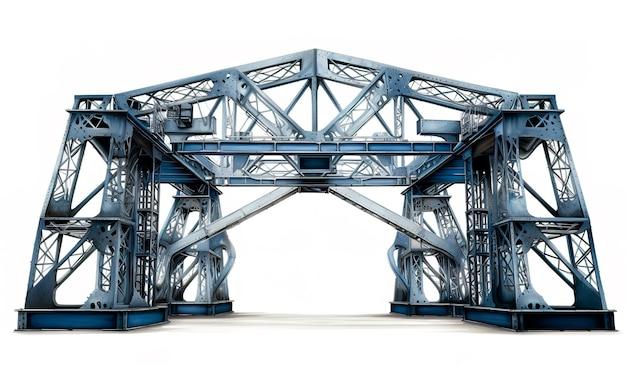There’s something fascinating about bridges, isn’t there? These engineering marvels not only connect us physically, but they also serve as symbols of ingenuity and human progress. But have you ever wondered what makes a bridge strong? In this blog post, we’ll explore the world of bridge structures and uncover the secrets behind their strength.
From ancient arch bridges to modern truss bridges, we’ll delve into the different types of designs and materials used in their construction. We’ll answer questions like why an arch is stronger than a beam, what makes a truss bridge so sturdy, and which bridge structure can hold the most weight. Whether you’re an aspiring engineer, a curious mind, or just someone interested in the world around you, this post will provide you with valuable insights into the strongest bridge structures.
So grab your hard hat and join us on this journey to discover the power and resilience of bridges!
The Indestructible Power of Bridge Structures
The Quest for the Strongest Bridge
When it comes to bridge structures, strength is the name of the game. We humans have always been obsessed with building bridges that can withstand the test of time, weight, and well, just about anything you throw at them. But what exactly is the strongest bridge structure out there? Buckle up, my friend, because we’re about to take a ride through the world of engineering marvels and find out!
The Arch Bridge: A True Contender
One of the all-time showstoppers when it comes to bridge structures is the arch bridge. Just imagine a colossal rainbow stretching across the horizon, holding its head high, and saying, “I got this!” Known for its elegant curves and timeless beauty, the arch bridge has been around since… well, I don’t even know, probably around the same time our ancestors were trading sticks and stones.
Now, you might be wondering what makes the arch bridge such a fierce contender in the never-ending quest for strength. Let me break it down for you. The secret lies in its shape. The arch, with all its grace and magnificence, distributes the weight evenly along its curvature, channeling the force downwards and sideways. Talk about a multitasking superstar!
The Suspense of Suspension Bridges
If the arch bridge is the Oscar-worthy actor, then suspension bridges are the ultimate thrill-ride director. These babies know how to keep you on the edge of your seat, anxiously gripping the armrests. Imagine walking across a bridge that stretches as far as your eyes can see, defying gravity, and taunting the laws of physics. Now that’s what I call an adrenaline rush!
Suspension bridges rely on a combination of strong cables, towering pillars, and a pinch of magic to create their jaw-dropping strength. These graceful giants hang the roadway from massive cables, distributing the load across multiple points of support. It’s like a well-choreographed dance, where each cable plays its part to perfection, balancing the forces and ensuring the bridge stays intact. Bravo!
The Wizardry of Cable-Stayed Bridges
Wait, there’s more! Brace yourself, because we’re diving into the enchanting world of cable-stayed bridges. Picture this: towering pylons standing tall like guardians of the city, with multiple cables fanning out from the top like a magical web, supporting the road deck with unwavering might. It’s a sight straight out of a fantasy movie, but trust me, it’s real!
Cable-stayed bridges combine the best of both the suspension and the arch worlds. With their impressive cable systems and elegant tower structures, they form a winning formula for strength and stability. These bridges are like the superheroes of the engineering realm, able to conquer vast spans and showcase their unrivaled might.
Conquering the Impossible—The Future of Bridge Structures
As we step into the future, the quest for the strongest bridge structure continues. Engineers and visionaries are pushing the boundaries of what was once considered impossible. Materials like carbon fiber, nanotechnology, and who knows what else they’ve invented while I was writing this, are revolutionizing bridge construction.
So, my friend, the search for the strongest bridge structure is an ongoing saga, with each new design striving to outdo its predecessors in the game of strength and durability. Whether it’s the arch bridge, the suspension bridge, or the cable-stayed bridge, one thing is for sure: bridges are not just remarkable feats of engineering; they are the lifelines that connect us and remind us of our remarkable ability to build wonders that span both time and space.
In conclusion, the strongest bridge structure is a testament to human achievement, an example of resilience and bold innovation. So, let’s take a moment to appreciate these engineering marvels and the remarkable minds that bring them to life.
FAQ: What Is the Strongest Bridge Structure
Why is an arch stronger than a beam
An arch is stronger than a beam because it can bear weight more efficiently by distributing the forces along its curve. This distribution of forces helps in providing better support and stability to the structure.
What are the weaknesses of an arch bridge
Although arch bridges are known for their strength, they do have a few weaknesses. One of the main concerns is the lateral thrust, which tends to push the abutments outward. To counter this, engineers often use tie rods or triangular bracing to add extra stability and prevent the bridge from collapsing.
What is the most stable bridge design
When it comes to stability, the arch bridge takes the crown. The curved shape of the arch efficiently transfers loads and forces, allowing it to withstand heavy weights and strong winds. The stability of this design has been proven over centuries, making it a reliable choice for engineers.
What is the best design for a bridge
The best design for a bridge depends on various factors, such as the location, purpose, and budget. While arch bridges are known for their strength, other designs like beam bridges or suspension bridges have their own advantages. It’s essential to consider the specific requirements of the project to determine the best design.
What skills do you need to build a bridge
Building a bridge requires a combination of engineering, design, and construction skills. A deep understanding of mathematics and physics is necessary to calculate loads, forces, and structural integrity. Knowledge of materials, such as steel or concrete, and strong project management skills are also vital for successful bridge construction.
What makes a truss bridge so strong
Truss bridges derive their strength from the triangular arrangement of their structural elements. The triangular shape ensures that forces are evenly distributed, minimizing the risk of structural failure. This design allows truss bridges to handle heavy loads while remaining relatively lightweight.
What is the weakest type of bridge
The suspension bridge is often considered the weakest type of bridge in terms of its ability to withstand lateral forces. Although suspension bridges can span long distances, they are susceptible to sway and vibration caused by wind or even the movement of pedestrians. However, proper engineering and design can address these challenges and ensure the bridge’s stability.
What is the most expensive type of bridge to build
Cable-stayed bridges tend to be the most expensive type of bridge to build. The complexity of their design and the high cost of materials, such as steel or concrete, contribute to their overall expense. Additionally, their construction often requires specialized equipment and skilled labor, further driving up the costs.
What is the strongest type of bridge structure
The arch bridge is commonly regarded as the strongest type of bridge structure. Its curved design allows it to evenly distribute forces, preventing concentrated stress points. This distribution of forces results in superior strength and durability, making the arch bridge a formidable choice for engineers.
What is the cheapest bridge to build
Beam bridges are typically the least expensive type of bridge to build. Their simple and straightforward design, with horizontal beams supported by abutments or piers, requires fewer materials and less complex construction methods compared to other bridge types.
How long does it take to construct a bridge
The construction time of a bridge varies greatly depending on its size, complexity, and the construction method used. While smaller bridges may take a few months to complete, larger and more intricate structures can take multiple years of planning, design, and construction before they are ready for public use.
What is the strongest bridge building material
Steel has long been recognized as the strongest bridge building material. Its high tensile strength and durability make it an ideal choice for withstanding the forces and stresses experienced by bridges. Steel’s versatility also allows for creative designs, ensuring both strength and aesthetics in bridge construction.
Why did they build covered bridges
Covered bridges were originally constructed to protect the wooden components of the bridge from the elements. The covering, often made of wood, provided shelter, preventing rapid deterioration caused by exposure to rain, snow, and sun. Although not as common today, covered bridges serve as historical landmarks and cultural heritage sites.
What type of truss bridge is the strongest
The Warren truss is considered one of the strongest truss bridge designs. Its repeating pattern of diagonals and verticals forms equilateral triangles, which evenly distribute forces and provide excellent structural integrity. This arrangement allows the Warren truss to withstand heavy loads and maintain stability.
What type of steel is best for bridges
For bridge construction, high-strength structural steel, such as ASTM A709, is commonly used. It offers a favorable combination of strength, ductility, and weldability, making it well-suited for the demanding conditions bridges face. This type of steel ensures the durability and longevity of the bridge structure.
What makes a bridge strong
A bridge’s strength relies on several factors. First and foremost, the design and materials used play a crucial role. The chosen design should distribute forces evenly to avoid weak points. Additionally, high-strength materials, proper construction techniques, and regular maintenance contribute to a bridge’s strength and longevity.
How do you make a straw bridge stronger
To make a straw bridge stronger, you can consider adding additional support by reinforcing key areas with extra straws or bracing materials. Utilizing triangular shapes, such as trusses or cross-bracing, can greatly enhance the bridge’s stability and load-bearing capacity. Always remember to distribute forces evenly to prevent concentrated stress points.
Which type is the most expensive to build
Cable-stayed bridges tend to be the most expensive type of bridge to build due to their complex design and the materials required. The presence of tall pylons and multiple cables increases the cost of construction, as specialized engineering and construction methods are necessary to ensure their stability and functionality.
Which type of bridge can hold the most weight
Among bridge types, suspension bridges are known for their ability to span long distances and carry heavy loads. The use of suspension cables and towers allows for a high strength-to-weight ratio, enabling these bridges to support immense weights, such as vehicles and even railway tracks.
What is the most common type of bridge
The beam bridge is the most common type of bridge found in various locations worldwide. Its simple design, consisting of horizontal beams supported by piers or abutments, makes it easy to construct and maintain. Beam bridges are often used for shorter spans such as highway overpasses or pedestrian crossings.
What forces act on a bridge
Bridges experience various forces that act upon their structure. These forces include compression, tension, shear, and torsion. Compression squashes or pushes the bridge together, tension pulls it apart, shear creates a sliding effect, and torsion causes twisting. Engineers carefully consider these forces when designing and constructing bridges to ensure their structural integrity.

